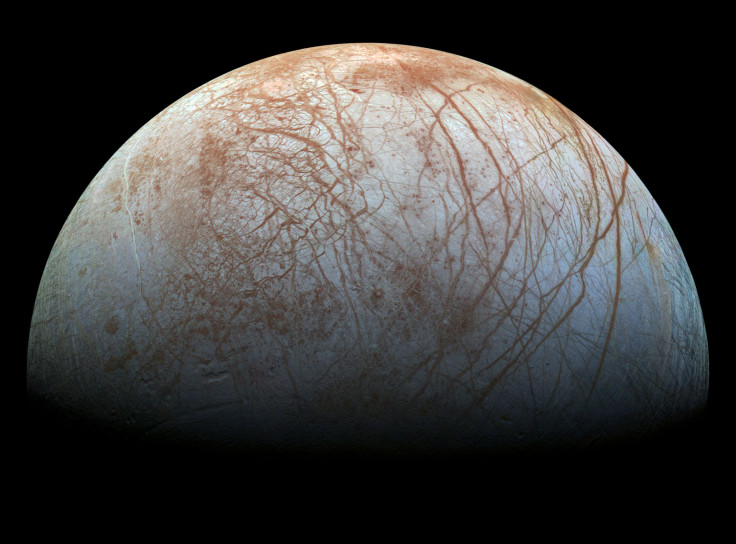ESA Finds New Evidence Of Watery Plumes On Jupiter’s Moon Europa

KEY POINTS
- ESA discovered new evidence of vapor plumes from Europa
- Plumes in the atmosphere affected the behavior of protons
- ESA aims to study Europa's subsurface ocean for signs of life
Researchers of the European Space Agency (ESA) recently came across new evidence of an active eruption of vapor plumes on the surface of Jupiter’s icy moon Europa. This finding could help future missions in studying the potentially habitable subsurface ocean of the moon.
Europa is characterized by the reddish streaks on its surface. According to the ESA, these streaks are marks etched into the thick icy surface of the moon. This surface, which is believed to be several miles thick, hides Europa’s vast subsurface liquid ocean.
Previous scientific reports that eruptions on the surface of Europa can eject subsurface materials into space. Scientists believe that studying these materials could provide information regarding the conditions of Europa’s oceans. Unfortunately, agencies have not yet collect direct evidence on the plumes of vapor eruption from Jupiter’s moon.
Recently, while going through data collected by Galileo, an orbiter launched by NASA in 1989, ESA researchers came across indicators of vapor plumes on Europa. According to the researchers, Galileo’s data during one of its flybys on the moon revealed strong depletion of energetic protons.
After creating simulation-based models using Galileo’s data, the researchers learned that the proton depletion was caused by plumes of water vapor shooting into space. As the plumes left the surface, they disrupted the moon’s atmosphere, causing disturbances in the magnetic field.
According to the researchers, the presence of the plumes affected the behavior of the energetic protons in the atmosphere.
“What is new here is that part of the decrease can be explained by charge exchange, a process whereby the protons are removed after they lose their electrical charge in Europa's thin atmosphere,” the researchers wrote in their study published in the journal Geophysical Research Letters.
“Furthermore, we see that there is a special decrease, which can be explained by an erupting plume of water vapor, thereby providing additional evidence for an active plume during Galileo flyby E26,” they continued.
The ESA plans to use the findings of the study to guide its upcoming mission known as the Jupiter Icy Moons Explorer (JUICE), which is scheduled to launch in 2022.
According to the agency, the JUICE spacecraft aims to collect vapor samples from Europa’s atmosphere in order to study the composition of its subsurface ocean. Through the mission, ESA hopes to determine if the moon’s liquid ocean is capable of supporting alien life.
© Copyright IBTimes 2025. All rights reserved.





















